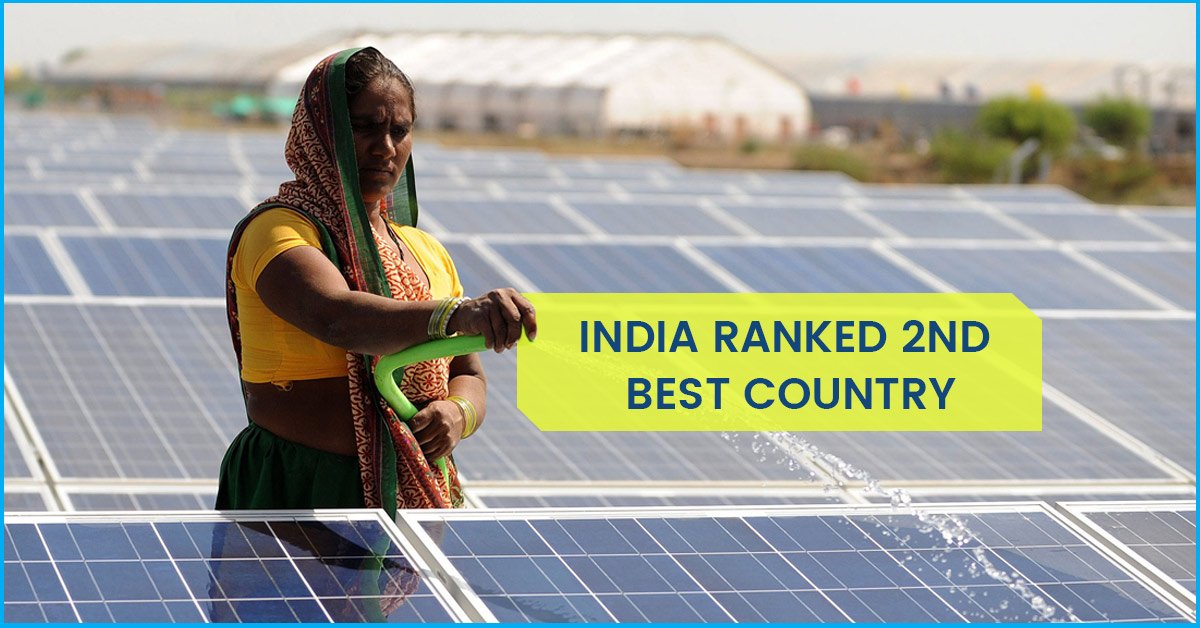
India’s Push Towards Renewable Energy Is Laudable, But More Needs To Be Done
2 Oct 2017 11:26 AM GMT
“The only way forward, if we are going to improve the quality of the environment,
is to get everybody involved.” – Richard Rogers
In May this year, India was named the second-best country in 2017 Renewable Energy Country Attractiveness Index (RECAI).
According to the report by EY, a “combination of strong government support and increasingly attractive economics” has helped make India the second-best country for renewable energy.
This follows recent dramatic growth in renewables, with more than 10GW of solar capacity added in three years — from a low base of just 2.6GW in 2014 — and a record new wind capacity installed in 2016.

This growth is in the context of the government’s ambitious targets — 175GW of renewables by 2022, with 40% installed capacity from renewables by 2030 — and the dramatic price falls in solar technology in particular. In recent tenders, solar developers have offered to supply power at lower prices than new-build coal plants, effectively blocking new coal capacity.
India’s 2022 target, set by Prime Minister Narendra Modi in 2014, includes 100GW of solar, 60GW ground mounted and 40GW rooftop. Wind is expected to deliver 60GW, with biomass and small hydro accounting for the remaining 15GW. In the 2016–17 financial year, India added 12.5GW of renewable energy capacity, compared with 10.2GW from conventional sources.
India’s laudable push towards clean energy
By 2022, India aims to have the capacity to generate 175 gigawatts of power from solar, biomass, and wind energy. A draft report by the country’s electricity agency in December predicted that capacity would increase to 275 gigawatts by 2027.
With 8.8GW of capacity addition projected for the year ahead, India is set to become the third-biggest solar market globally in 2017, overtaking Japan, according to the India Solar Handbook 2017.
The government has forecast that it will exceed the renewable energy targets set in the Paris Agreement by nearly half and three years ahead of schedule. The Draft National Electricity Plan predicts that, by 2027, 57% of India’s total electricity capacity will come from non-fossil fuel sources (the Paris climate accord target was 40% by 2030).
Tim Buckley, a director at the Institute for Energy Economics and Financial Analysis, said the most important factor driving a rush of international investment in Indian renewables was the “transparency, longevity and certainty” of the country’s energy policy. He told The Guardian
That is absolutely critical because when you invest for 25 to 35 years, you need certainty and clarity of policy.
To fight climate change, we need technology
Thanks to scientists, environmentalists, activists, and increased awareness, climate change is now taken seriously by most governments in the world. Climate action accelerated in pace particularly after 2015’s historic Paris Agreement. Other than India, other countries have pitched in too.
- China, for example, has introduced a cap on coal and will peak coal emission by 2030.
- Germany will ban combustion engines by 2030.
- In the US, high-profile advocates for the environment have funded a 20-year clean energy fund to the tune of US$1 billion.
- Britain recently set a record the world was happy to see: it had its first coal-free power day in 135 years.
Developments that favour the propagation of clean energy show a positive movement for our society. Such measures should be applauded and encouraged so that the goals of the Paris Agreement can be met as soon as possible, well before the stipulated time.
Climate change is probably the biggest global problem of our time. Implementing the Paris Agreement will be the first concrete step in reversing the drastic consequences of climate change which have endangered our very existence. And employing technology and innovation to counter climate change and uphold environmentalism will be a difficult and lengthy challenge albeit a crucial one, perhaps the most crucial one of our time.
More than 40 Million Indian households do not have access to electricity. How do you think we can ensure access to electricity for all by 2019?
UNDP in India and The Logical Indian are coming together to hear your voices, get your ideas, on how we can unlock technology’s potential to make India a better place.
Take the poll and let us know your views. Join us on Facebook on 5th October.
 All section
All section













